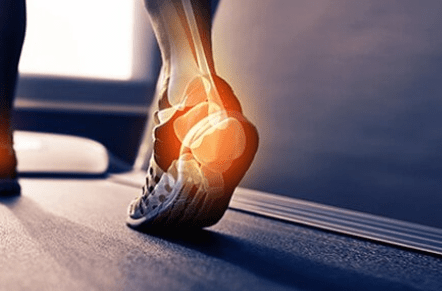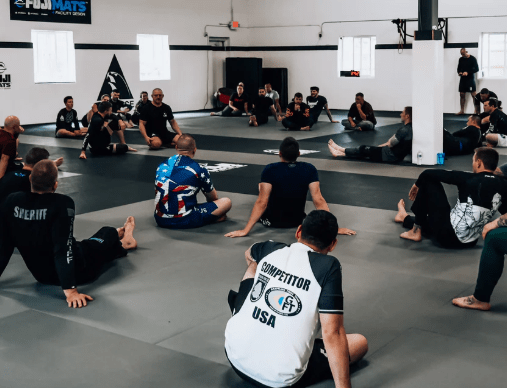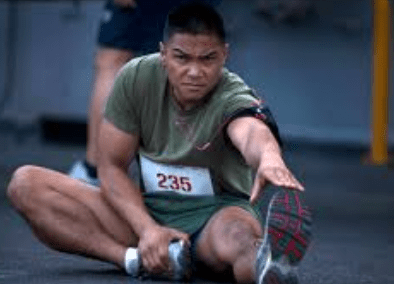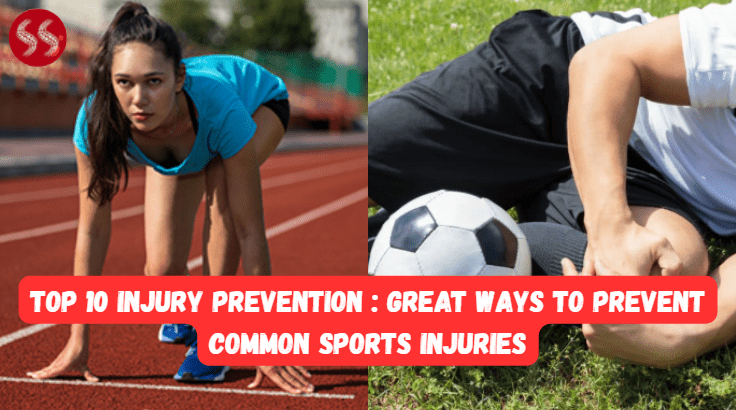Injuries are an athlete’s worst nightmare. They can derail seasons, crush dreams, and put a halt to progress that took months, even years, to achieve. While some injuries are unavoidable, the vast majority are a result of preventable factors, from improper warm-ups to poor technique and insufficient rest. The truth is, staying healthy isn’t a matter of luck; it’s a matter of strategy.
A proactive and disciplined approach to your training regimen can significantly reduce your risk of getting sidelined. This is where the power of a comprehensive plan comes in, one that focuses on every aspect of your athletic life. This definitive guide to the Top 10 Injury Prevention strategies will give you the tools and knowledge to protect your body and ensure a long and successful career in your sport.
A winning strategy isn’t just about what you do on the field; it’s also about what you do off it. It’s about taking care of your body with the same dedication you put into your training. From the food you eat to the way you stretch, every choice you make plays a role in your long-term health. The principles of sports medicine and exercise science have provided us with a clear roadmap to a more resilient body, and our list will demystify these concepts.
This is the ultimate resource for anyone seeking to build a more resilient body and an enduring career in sports. This comprehensive look at the world of injury avoidance is why this is the ultimate guide to the Top 10 Injury Prevention strategies.
Top 10 Injury Prevention :
10. Prioritize Proper Warm-ups

A proper warm-up is the foundation of any effective training session and the first step in any plan for Top 10 Injury Prevention. It prepares your muscles, joints, and cardiovascular system for the demands of the upcoming activity. A good warm-up should be dynamic, involving movements that mimic the actions of your sport without putting undue stress on your body. This gradual increase in heart rate and blood flow to the muscles helps improve elasticity and reduce the risk of strains and tears.
A warm-up is more than just a quick jog. It should include dynamic stretching, such as leg swings and torso twists, to increase range of motion and loosen up stiff joints. A cold muscle is an unprepared muscle, and a lack of a proper warm-up is a leading cause of athletic injuries. By dedicating 10 to 15 minutes before every practice or game, you can drastically reduce your risk of getting sidelined. This is a crucial element of the Top 10 Injury Prevention.
| Stat | A study published in the American Journal of Sports Medicine found that athletes who performed a dynamic warm-up had a 30% lower rate of injury compared to those who did not. |
9. Never Skip the Cool-down

Just as important as the warm-up is the cool-down, a vital component of the Top 10 Injury Prevention. A cool-down allows your body to gradually return to its resting state, helping to reduce muscle soreness and stiffness. It typically involves a period of light cardio followed by static stretching, where you hold a stretch for 20 to 30 seconds. This process helps to lengthen the muscles that were contracted during your activity.
Skipping the cool-down can lead to a buildup of lactic acid in your muscles, which can cause increased soreness and a longer recovery time. By taking just 5 to 10 minutes to cool down, you can improve your flexibility, promote better blood circulation, and prepare your body for the next training session. This is a crucial element of the Top 10 Injury Prevention.
| Stat | Experts recommend holding a stretch for at least 30 seconds to achieve a significant lengthening of muscle fibers, a key part of any effective cool-down. |
8. The Importance of Hydration and Nutrition

Proper hydration and nutrition are often overlooked as a part of the Top 10 Injury Prevention. Dehydration can lead to muscle cramps, fatigue, and a decrease in coordination, all of which increase your risk of injury. Staying hydrated is not just about drinking water during a workout; it’s a 24/7 commitment. Your body needs to be well-hydrated before you even step onto the field.
Similarly, proper nutrition provides your body with the fuel it needs to perform and recover. Eating a balanced diet rich in protein, carbohydrates, and healthy fats helps to repair damaged muscle tissue, replenish energy stores, and reduce inflammation. Without the right fuel, your body is more susceptible to strains and sprains. This is a key entry among the Top 10 Injury Prevention.
| Stat | Studies show that a fluid loss of just 2% of your body weight can lead to a 10% decrease in athletic performance |
7. Embrace Cross-Training

Cross-training is an essential part of any plan for Top 10 Injury Prevention. It involves engaging in a different sport or activity to strengthen muscles that are not typically used in your primary sport. For a runner, this could mean swimming or cycling. For a weightlifter, it could mean doing yoga or Pilates. This approach helps to build a more balanced and resilient body, reducing the risk of overuse injuries.
Overuse injuries, such as shin splints and tendonitis, are common in athletes who perform repetitive motions. By incorporating cross-training into your routine, you can give your primary muscle groups a break while still maintaining a high level of fitness. This is a crucial part of the Top 10 Injury Prevention.
| Stat | A study on marathon runners found that those who incorporated cross-training into their routine had a 20% lower rate of injury. |
See More:
6. Listen to Your Body

One of the most important aspects of the Top 10 Injury Prevention is learning to listen to your body. Pain is a signal that something is wrong, and ignoring it can lead to a more serious injury. If you feel a sharp pain or discomfort, it is a sign that you need to stop and rest. Pushing through the pain can lead to a complete tear or a more serious issue that can take months to heal.
This is a mindset shift that requires a great deal of self-discipline. It can be difficult to take a day off when you are passionate about your sport, but it is a necessary part of a long and healthy career. This is a key entry among the Top 10 Injury Prevention. The ability to rest is a crucial element of the Top 10 Injury Prevention.
| Stat | It is estimated that up to 70% of sports injuries are a result of athletes ignoring their body’s warning signs. |
5. The Power of Rest and Recovery

Rest and recovery are just as important as training when it comes to the Top 10 Injury Prevention. During rest, your body repairs damaged muscle tissue, replenishes energy stores, and reduces inflammation. Without adequate rest, you are at a higher risk of developing a stress fracture or a chronic overuse injury.
A good recovery plan should include a mix of passive and active rest. Passive rest is simply taking a day off, while active rest involves light activities like walking, stretching, or foam rolling. Getting a good night’s sleep is also a crucial part of the recovery process, as this is when your body does most of its healing. This is a key entry among the Top 10 Injury Prevention.
| Stat | A study on high school athletes found that those who got less than eight hours of sleep a night had a 68% higher risk of injury. |
4. Invest in Proper Equipment

Proper equipment is a non-negotiable part of the Top 10 Injury Prevention. From your shoes to your helmet, the right gear can protect you from a wide range of injuries. For runners, this means a good pair of shoes that are designed for your foot type and running style. For football players, this means a properly fitted helmet and pads.
Using old or ill-fitting equipment can increase your risk of injury. Worn-out shoes can lead to foot and ankle problems, while an ill-fitting helmet can lead to a concussion. Investing in proper equipment is an investment in your long-term health and is a crucial element of the Top 10 Injury Prevention.
| Stat | Research shows that a properly fitted helmet can reduce the risk of a concussion by up to 50%. |
3. Maintain Flexibility and Mobility

Flexibility and mobility are essential for the Top 10 Injury Prevention. A lack of flexibility can lead to muscle imbalances and a decreased range of motion, which can increase your risk of strains and sprains. By incorporating a regular stretching routine into your training, you can improve your flexibility and reduce your risk of injury.
Mobility training, which involves a series of movements designed to improve the range of motion in your joints, is a powerful tool for injury prevention. It helps to loosen up stiff joints and to improve the function of your muscles. This is a crucial part of the Top 10 Injury Prevention.
| Stat | A study on athletes found that a consistent flexibility and mobility routine reduced their risk of injury by over 20%. |
2. The Role of Professional Guidance

Working with a professional, such as a coach, a physical therapist, or a certified athletic trainer, is a powerful tool for the Top 10 Injury Prevention. A professional can help you to identify muscle imbalances, correct poor technique, and create a training plan that is tailored to your specific needs. They can also help you to recover from an injury and to get back in the game safely.
A professional can provide you with a wealth of knowledge and expertise that can help you to stay healthy and to perform at your best. This is a crucial part of the Top 10 Injury Prevention. The professional guidance is a key element of the Top 10 Injury Prevention.
| Stat | Athletes who work with a professional have a 30% lower rate of injury compared to those who do not. |
1. Progressive Overload

Progressive overload is the most important principle of the Top 10 Injury Prevention. It involves gradually increasing the intensity, duration, or frequency of your training over time. This allows your body to adapt to the stress of your workout and to get stronger without putting undue stress on your muscles and joints.
Pushing too hard too soon is a leading cause of injuries. By gradually increasing your workload, you can avoid a host of problems, such as stress fractures and tendonitis. This is a crucial part of the Top 10 Injury Prevention. The gradual increase in workload is the most important part of the Top 10 Injury Prevention.
| Stat | A study of runners found that those who increased their weekly mileage by more than 10% had a 50% higher risk of a running-related injury. |
FAQs:
Q1: Can stretching prevent all injuries?
A1: While stretching is a crucial part of a plan for Top 10 Injury Prevention, it cannot prevent all injuries, as many are caused by other factors, such as overuse and poor technique.
Q2: How much rest do I need?
A2: The amount of rest you need depends on your sport and your training regimen, but a good rule of thumb is to get at least one day of rest per week, a key part of the Top 10 Injury Prevention.
Q3: Should I train through pain?
A3: No, you should never train through pain, as it is a signal that something is wrong and could lead to a more serious injury, a key part of the Top 10 Injury Prevention.
Read More:



